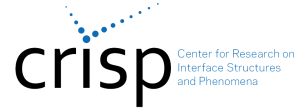Science
| Title of Presentation(s) | Grade Range |
|---|---|
| Animals of the Deep – Sea Mice, Killer Snails, and Giant Sea Spiders… Marine biologist Robert Prezant offers students a hands-on overview of marine animals, from sponges to sharks. Students will be able to safely handle preserved organisms (gloves will be supplied), some of which they've never seen before (such as giant deep sea pill bugs or cowfish). Students will gain a deeper appreciation of the diversity of the animals that swim through the waters and crawl through the muds of our world ocean. |
3-7 |
| Archaeology in Connecticut Archaeologist Bill Farley teaches about the archaeology of Connecticut including hands-on experiences with artifacts from real archaeological sites (including some that are thousands of years old). We'll try to answer a few questions including: What is archaeology? How long have people lived in the New Haven area? What is an artifact and what is an archaeological site? And what kinds of things can we learn about the past from the trash they have left behind? This professor is overbooked and is no longer taking requests at this time. |
Any |
| Functional Morphology of Marine Animals (From Sponge to Shark) Marine biologist Robert Prezant will use animals of the ocean to have students gain a deeper understanding of the link between form and function. From giant deep sea spiders to shallow water sharks, students will learn (and see first hand) how modified structures changed over time as organisms evolutionally adapted new life styles reflecting changes in their environments |
8-12 |
| Mathematical Chaos and Unpredictability, or Why Long-term Weather Forecasting is Impossible Participation in hands-on exercises that give a glimpse into mathematical chaos and the Butterfly Effect help illuminate why long-term weather forecasting is mathematically impossible. Perfectly predictable functions exhibit perfectly unexpected (and unpredictable) behavior! A mix of different electronic devices and/or software packages in the audience makes for the most lively and surprising experience. |
8-12 |
| Particle Physics-What is the Universe REALLY Made Of? Physicist Evan Finch will aim to give students a glimpse into what particle physics is. We'll start by building a very simple "cloud chamber" particle detector and looking for particle showers of cosmic rays coming down from space. Then we'll talk about how we know what we think we know about the basic stuff that the universe is made of, and then about some of the many things that are still complete mysteries to us. |
6-12 |
| Self-Similar Shapes: Once Considered Monsters, Now Considered Tame Once Considered Monsters, Now Considered Tame. See squares, rectangles, and triangles from a whole the perspective of self-similarity. From that, make sense of some of the “monsters” of mathematics like Sierpinski's Gasket and Heighway's Dragon. Finally, see common natural shapes such as broccoli and clouds in a mathematical light. Nothing more than familiarity with the names of common polygons is needed to appreciate this discussion. First names (which need to be provided beforehand) will be used to produce personalized fractals for all participants. |
3-7 |
| You May Have Seen Tessellations Before, But Have You Ever Seen Rep-tessellations? Some tiles are more intricate than others. Many students will have seen a tessellation, or tiling, of the plane made from rectangles, triangles, hexagons, or some combination of polygons. Some will even have seen the fascinating tilings of M.C. Escher, but very few will have seen rep-tessellations, built from replicating tiles, or rep-tiles. These rep-tessellations tile the plane at infinitely many scales! This presentation will take the audience on a journey through all these types of tilings and leave them with a take-home mathematical art project. |
8-12 |
| How Animals Talk to One Another Behavioral Ecologist Kelly Stiver will outline the many complicated and interesting ways that animals (e.g. sparrows, honey bees, ants, elephants, dogs, cats, and whales) communicate to one another – sometimes even using signals and messages that humans can’t detect. Using video and conversation, she will outline how animals use sound, sight, taste, touch, and smell to exchange information, how it is similar and different from what humans do, and even address the question of whether animals have their own complex languages, or if they understand human language! |
K-3 |
| Animal Friends and Enemies Like humans, other animals have complex social lives, filled with helpful and harmful individuals. Using video and conversation with students, Behavioral Ecologist Kelly Stiver will outline cooperation and conflict in several animal species, with particular focus on group-living mammals and birds. She will also explain the behaviors animals use to initiate and defuse conflict, and how animal societies are similar to human groups. |
3-7 |
| The Function of Conflict and Cooperation in a Mediterranean Fish Behavioral ecologist Kelly Stiver will outline the complex reproductive behavior of her focal species, the ocellated wrasse (Symphodus ocellatus). The presentation will include video of wrasse behavior, and the opportunity for students to attempt to identify different social and reproductive behaviors. There will also be a brief introduction to the theory of natural selection and specific theories about cooperation and conflict. |
8-12 |
| Rewilding la Patagonia: Nature, ecology, and conservation in southern Chile Jesse Gleason teaches Spanish through the cultural lens of ecological preservation in southern Chile. In this session, students will examine the rewilding efforts in the Chilean Patagonia, specifically examining the flora, fauna, and ecosystems that were/are endangered and the conservation efforts currently underway to "rewild" this part of the world. Students will learn about Chile's unique history of biodiversity and conservation, the development of the Patagonian Route of Parks, and the tremendous efforts by Tomkins Conservation over the past three decades to counter climate change and species extinction in the Southern Cone. This presentation could be offered in English, Spanish, or a mixture of the two. "You can only protect the things that you love, if you identify with them." Kristine Tompkins, Rewilding Chile |
9-12 |
| Rocks, Rock Cycle, and the Ridges of New Haven New Haven and its surroundings is full of geological wonders of the past eons. Geologists and Earth Science Professors at SCSU, Jennifer Cooper-Boemmels and Nicholas Fedorchuk will highlight how local rocks, their minerals, and the ridges of West Rock and East Rock hide the enigmatic geologic history of our state, including its volcanic past, in plain-sight. The presentation will provide students the opportunity to examine and describe rock and mineral samples, observe rocks and minerals under a microscope, and explore geological maps and the geological history of the state. Students will discover the connection between the geologic processes that shape the Earth and the landscapes of New Haven today. |
6-12 |
NOTE: Teacher must be present in class during visiting scholar presentation. Presentations are subject to scholar availability. Any specific needs (media projectors, open tables, sink, etc.) for presentations must be available in the classroom. Specific needs will be provided to teachers prior to scheduling. Redundant presentation in a morning or afternoon are possible if there is an interest from the school and faculty time is available.
 CRISP (Center for Research on Interface Structures and Phenomena) provides a number of resources for teachers including kits, demos, professional development workshops, and more. Visit CRISP to learn more.
CRISP (Center for Research on Interface Structures and Phenomena) provides a number of resources for teachers including kits, demos, professional development workshops, and more. Visit CRISP to learn more.
